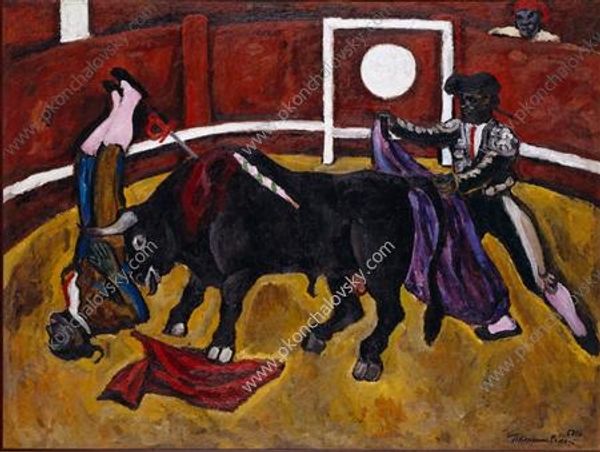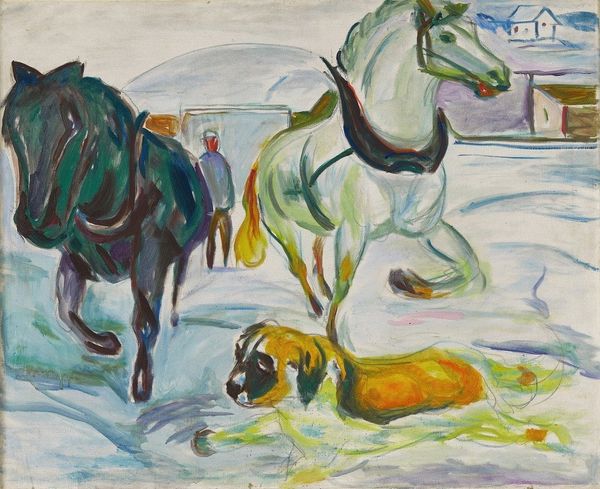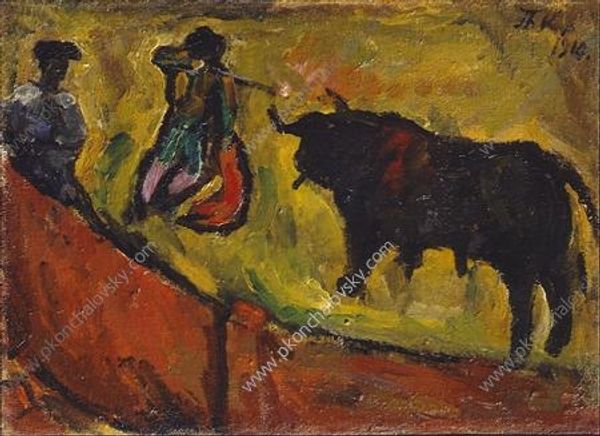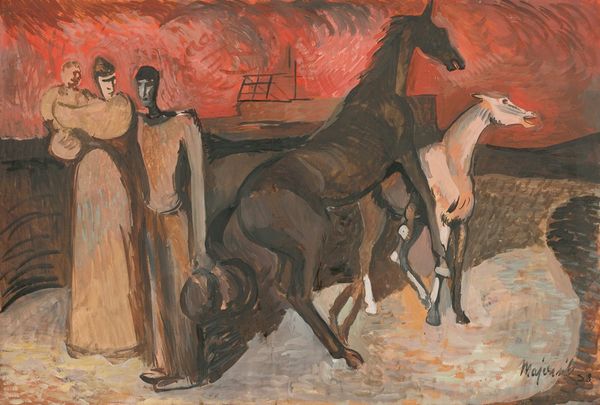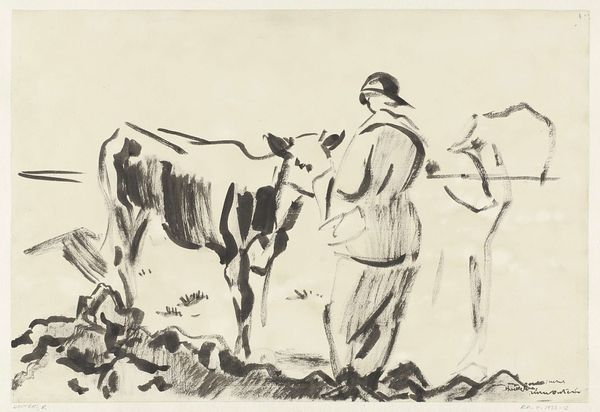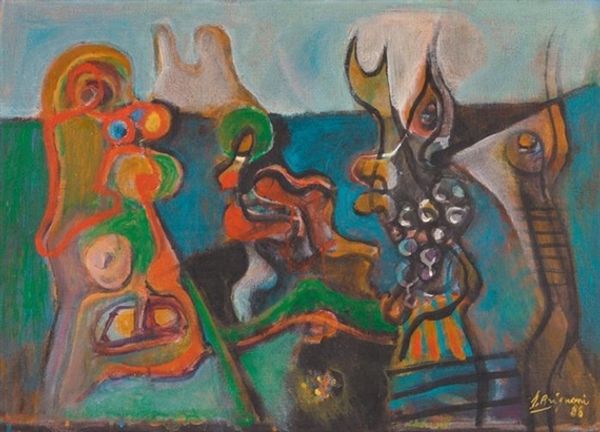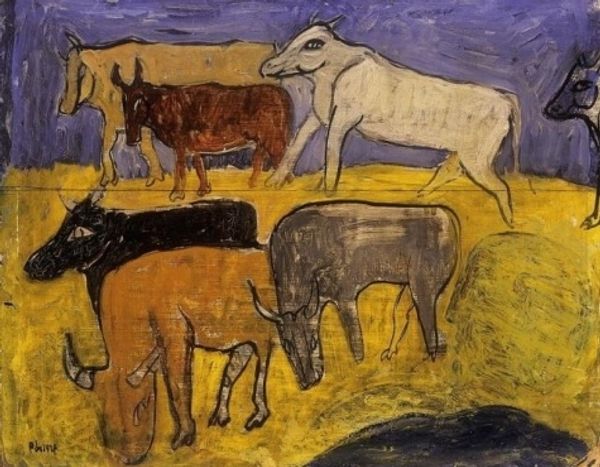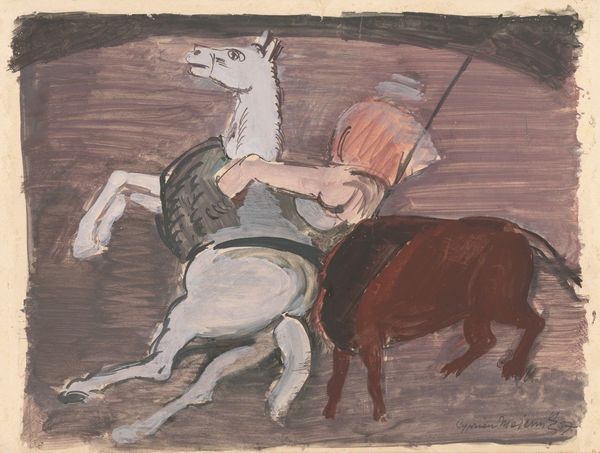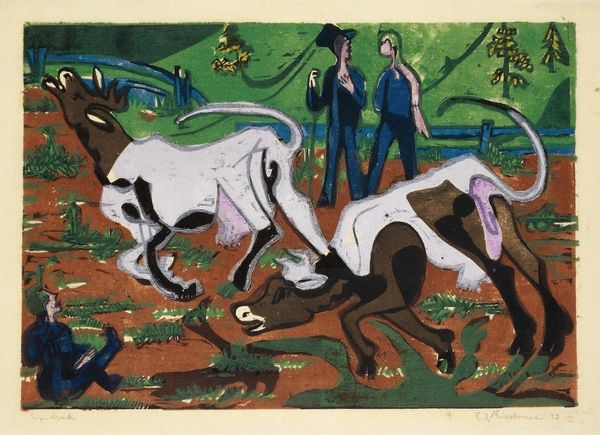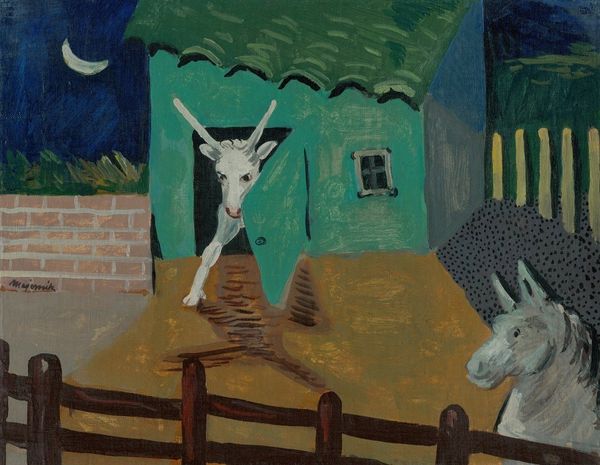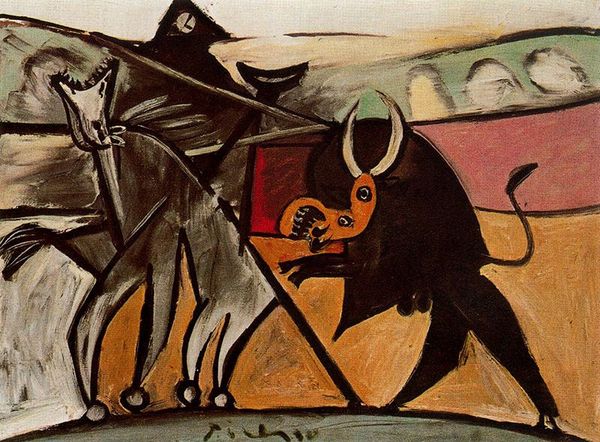
#
abstract painting
#
oil painting
#
fluid art
#
acrylic on canvas
#
street graffiti
#
facial painting
#
facial portrait
#
portrait art
#
expressionist
#
digital portrait
Dimensions: 59.3 x 73.3 cm
Copyright: Public domain US
Curator: Here we have Pyotr Konchalovsky's "Bullfight. Study." created around 1910. You can see it's currently housed in the Tretyakov Gallery in Moscow. What are your first thoughts? Editor: It's chaotic, and there's a raw energy conveyed through these almost violently applied brushstrokes. It’s far from celebratory, even grim, a kind of frenzied spectacle. Curator: Let’s unpack the "violent" application you noticed. Konchalovsky uses oil paint with remarkable impasto; look at how thickly layered it is on the canvas. This lends it a tactile quality, almost like sculptural relief. It emphasizes the physicality of the event itself—the exertion of the matador, the brute strength of the bull. The red, what does it say? Editor: The red amplifies the spectacle of violence, evoking blood and aggression. Consider the broader context: bullfighting as a tradition rooted in patriarchal power structures, where dominance is asserted through violence against an animal. What is being valorized? Curator: Indeed, the tradition, its place in society and as entertainment—however problematic—all become part of this visual product. And, look closely at the muted color palette besides that bright red – it almost seems like the entire scene has been dulled, drained of vibrancy. It makes you consider labor too: how was this made? Konchalovsky didn't just intend for this to be an image, he intended it to be a painted object made in a certain way with specific techniques, no? Editor: Precisely! Consider the implications. By focusing on these brutal confrontations, are we desensitized to violence and the suffering of non-human animals? How complicit are we, the viewers, in consuming this spectacle through art? Is this critical? Is it complicit? The position is not clear. Curator: And does that tension lie at the heart of its enduring impact, this constant questioning, and repositioning of the artistic statement? I appreciate that the lack of obvious clarity still fosters important discourse. Editor: Yes. By bringing awareness of the socio-political elements surrounding the tradition to our consciousness through engaging with it as material culture, we become better critical observers, and even better, perhaps become more empathetic actors within broader cultural spheres.
Comments
No comments
Be the first to comment and join the conversation on the ultimate creative platform.
